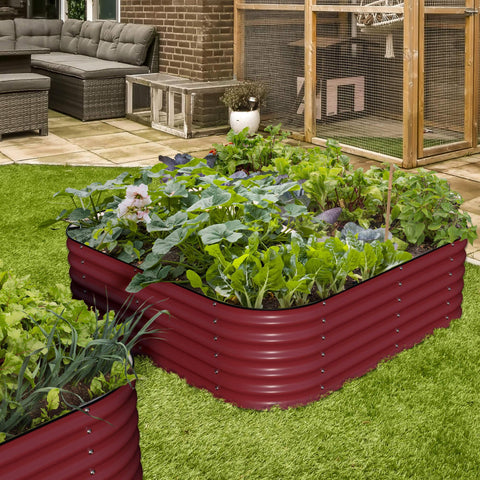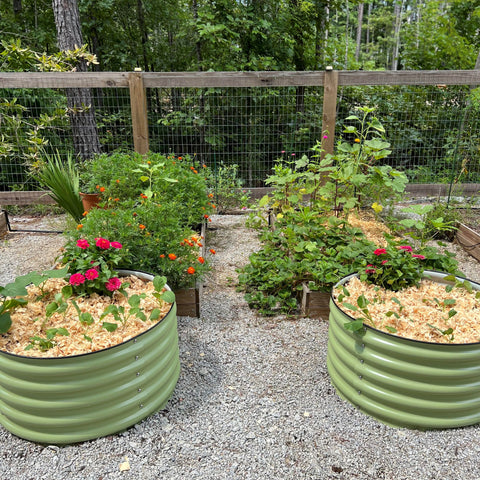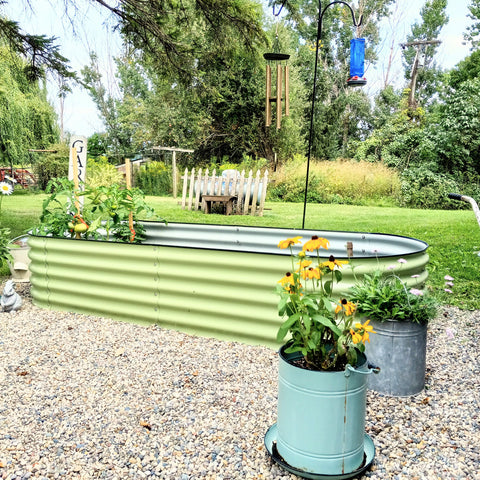Do Raised Garden Beds Need To Be Buried
If you live in an apartment or rental property, or the soil around your house is not suitable for planting plants, it is a good choice to have a raised garden bed. However, you may have reservations about using this gardening technology to plant plants on balconies, driveways, terraces or other similar places.
Raised garden beds do not have to be buried in the soil to grow plants. Raised garden beds do not have to be buried in the soil to grow plants.
Let's explain why you don't have to bury the raised garden bed. In addition, you will also understand the conditions required to make full use of the raised garden bed.

Should you bury a raised garden bed?
Raised garden beds look great on your property, especially when you don't have enough space to grow various plants. However, you may wonder whether burying them is a good idea.
The beauty of raised garden beds is that you can put them almost anywhere as long as you ensure that they receive enough sunlight and have a sound drainage system.
Although water is an excellent resource to keep plants alive, too much water in the soil can cause several problems.
It is important to remember that roots, like leaves, need oxygen to survive. Air exists in small pockets in the soil, called soil pores.
When the soil water content is too high, due to the lack of proper drainage system, it will reduce the amount of oxygen available to the roots.
Over time, too much water will cause plant diseases. In addition, root cells die due to hypoxia, leading to the final death of plants.
Factors to consider when installing a raised garden bed
Suppose you have a driveway and want to open a vegetable garden or plant ornamental plants to beautify your property. In this case, raising the garden bed is a good idea.
However, it will help if you remember the key factors to consider when installing the raised garden bed (i.e. Drainage and size).
Drainage
In terms of drainage, it is beneficial to keep the bottom open. It allows excess water to flow, ensuring that the soil will not be submerged by water and suffocate plants.
On the other hand, the open bottom frame will increase the risk of soil falling from the garden bed, especially if it is protruding. You want to avoid this situation because it will reduce the soil volume over time. In addition, the precious nutrients on which plants thrive will slowly seep out with the soil.
One way to overcome this problem is to use hardware cloth.
So if you have something left after making a garden bed with it, you can also make a fence with it.
When using the hardware cloth, do not put it on the bottom of the raised garden bed. Make sure to leave some space at the foot of the bed.
In addition, you should use landscape fabrics to keep the soil in place. Fold it on the hardware cloth. You can go very well.

If the water keeps falling on your hard ground, it will leave a stain. There are two solutions to this problem.
- One option is to use an electric washing machine, which can easily remove water stains.
- You can also use a drip tray to collect uncontrolled water.
However, depending on how often you water plants, you may have to drain them often.
Asphalt and concrete
As I mentioned, the drainage of the raised garden bed plays a vital role in the healthy growth of your plants. If the garden bed drains too fast, the roots of the plants will not be able to obtain the required water, resulting in their death.
Fortunately, you do not need to close the bottom of the frame of the asphalt and concrete floors.
Wood
When it comes to wooden surfaces of balconies, decks or terraces, drainage is essential. Although these materials may have been extensively treated to prevent decay, this is still a problem if their surfaces remain moist for a long time.
In this case, you must close the bottom frame of the raised garden bed. However, make sure there are enough holes for water to seep out of the setting.
You should also use a drip tray to prevent water from falling on the wooden floor. Empty the tray regularly to avoid water overflow.
Size
The size of the raised garden bed determines which plants you can plant.
For example, the root depth refers to the distance between the roots of plants to find nutrients and water.
There are three types of root depths:
- Light (12-18 inches or 30-45 cm)
- Medium (18-24 inches or 45-60 cm)
- Depth (24 inches or 45 cm and above)
Generally speaking, you need a 12-18 inch (30-45 cm) high raised garden bed to grow vegetables. If there is not enough space, you can choose 8-12 inches (20-30 cm) high setting.
If you want to know the root depth required for certain fruits and vegetables, please check this study of the University of Nebraska at Lincoln.
Because the wet soil is very heavy, you also need to use the support structure to reinforce the raised garden bed. Fortunately, you only need to do this if the length of the setting exceeds 6 feet (1.8 meters) or the height exceeds 18 inches (45 centimeters).

You do not have to bury raised garden beds for hard landscapes such as asphalt, concrete, ceramic tiles and wood. However, you need to pay close attention to the size and drainage system of this setting.
As long as you can try to prevent water from flooding the soil, you can plant a lot of plants and enjoy gardening.
